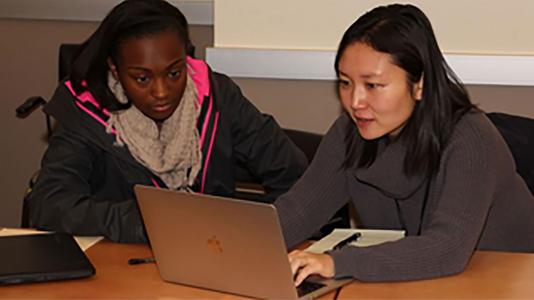
Several researchers from academia, community programs and Argonne and Fermi Accelerator National Laboratories recently discussed this question, focusing particularly on how the national labs can be leveraged more fully to improve Black representation in STEM. Their conclusions appeared in the Journal of STEM Education in January 2023.
Why are the national labs a great resource?
The researchers noted that when recruiting Black students, the national labs have several factors in their favor.
- They typically are located in or near major cities and hence are accessible to large numbers of minority populations.
- They participate in research areas that place a great value on fostering collaborative and interdisciplinary teams.
- They have funding available (e.g., through government agencies) to improve Black representation.
- They employ a highly diverse workforce, not only in terms of research disciplines, but also in terms of cultural and demographic backgrounds.
- They provide opportunities to develop technical skills (e.g., programming code) as well as “soft skills” such as grant writing and conference presentations.
What are examples of success in the national labs’ diversity programs?
Arguably, universities have been the primary developers of diversity programs focusing on STEM. But the U.S. Department of Energy (DOE) national labs are involved in numerous programs designed to attract students at various levels. The following are only a few of the many examples cited in the article.
- For high school students, multiple DOE national labs have collaborated with local chapters of Afro-Academic, Cultural, Technical, and Scientific Olympics (ACT-SO) to provide an immersive research experience in STEM (see Fig. 1).
- For undergraduates, DOE’s Science Undergraduate Laboratory Internships (SULI) program has placed minority students in summer research programs at the national labs.
- For graduate students pursuing a master’s or doctoral degree, DOE institutions actively participate in the National Consortium for Graduate Degrees for Minorities in Engineering and Science (GEM) Fellowship.
- For postdocs, DOE has instituted minority-student fellowships such as the Walter Massey fellowship at Argonne and the Carolyn B. Parker Fellowship at Fermilab.
What more is needed?
A repeated refrain in the article is the need for support, not just through summer programs or week-long workshops – although these are critical – but through sustained and broad-based commitment of community institutions, academia and national laboratories to improve diversity, equity and inclusion and the number of Black researchers in STEM. To this end, the authors offer five recommendations.
- Implement a systemwide high school research program focused on developing Black representation in STEM, for example by leveraging the national laboratories’ research workforce, state-of-the-art facilities and focus areas.
- Develop “program ambassadors” among community leaders, academics and early career researchers in STEM, for example by creating research opportunities at the undergraduate level that align with graduate research programs.
- Create early exposure to research opportunities for Black students, for example by developing collaborations with professors that allow students in minority research programs to transition to summer internships within the national laboratory system.
- Increase investment in graduate fellowships for Black students, for example by increasing the number of minority students accepted in the GEM program at the national laboratories.
- Leverage joint appointments to foster collaborations between government and academia, for example through a cooperative agreement enabling joint appointments between national laboratories and nearby academic institutions.
While achieving these recommendations will be challenging, the authors believe that “the same innovative approaches used to advance research can be directed at improving diversity, equity, and inclusion and the number of Black researchers in STEM.” And they believe that the national laboratories can be especially useful in “developing programs that strategically foster and bridge the development of minorities in emergent areas of STEM.”
For the full article and more detailed explanation of the recommendations, see J. Hampton-Marcell, T. Bryson, J. Larson, T. Childers, S. Pasero, C. Watkins, T. Reed, D. Flucas-Payton and M. E. Papka, “Leveraging national laboratories to increase Black representation in STEM: recommendations within the Department of Energy,” International Journal of STEM Education 10 (4) 2023, https://stemeducationjournal.springeropen.com/articles/10.1186/s40594-022-00394-4#article-info.